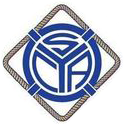 The public’s growing interest in amateur radio for emergency communications is a legacy of 9/11, when Americans saw their cellular telephone networks become overwhelmed by excess traffic and system outages. When regular phone service fails, amateur radio operators fill the communications gap with their independent transceivers and battery power backups.nnMore than 765,000 in the United States already hold amateur radio licenses from the Federal Communications Commission, however, data from the FCC indicates a recent uptick in the number of new hams, especially since the outbreak of COVID-19 worldwide.nnIn a comparison of the time period from March 5-13, 2020, to the same days in 2019, the number of persons signing up for amateur radio license courses on HamRadioPrep.com has soared more than 700% since news of the coronavirus outbreak dominated headlines. At the same time, the FCC shows a 7.1% percent uptick in new amateur licensees in the first week of March in 2020 vs the same week in 2019.nn“There has been a tremendous amount of interest in emergency preparedness since 9/11 and Katrina, and this is true for the amateur radio community as well,” said Mike Corey, the emergency preparedness manager for the American Radio Relay League (ARRL). “Emergency communications is a gateway into amateur radio, and many join our ranks through an interest in being better prepared themselves and as a way to serve their community.”nnSeveral SCYA member clubs regularly hold licensing classes, for any who are interested in becoming licensed, both for emergency services and social communications.nnRichard Townsend, Chair SCYA Radio Communications Committee
The public’s growing interest in amateur radio for emergency communications is a legacy of 9/11, when Americans saw their cellular telephone networks become overwhelmed by excess traffic and system outages. When regular phone service fails, amateur radio operators fill the communications gap with their independent transceivers and battery power backups.nnMore than 765,000 in the United States already hold amateur radio licenses from the Federal Communications Commission, however, data from the FCC indicates a recent uptick in the number of new hams, especially since the outbreak of COVID-19 worldwide.nnIn a comparison of the time period from March 5-13, 2020, to the same days in 2019, the number of persons signing up for amateur radio license courses on HamRadioPrep.com has soared more than 700% since news of the coronavirus outbreak dominated headlines. At the same time, the FCC shows a 7.1% percent uptick in new amateur licensees in the first week of March in 2020 vs the same week in 2019.nn“There has been a tremendous amount of interest in emergency preparedness since 9/11 and Katrina, and this is true for the amateur radio community as well,” said Mike Corey, the emergency preparedness manager for the American Radio Relay League (ARRL). “Emergency communications is a gateway into amateur radio, and many join our ranks through an interest in being better prepared themselves and as a way to serve their community.”nnSeveral SCYA member clubs regularly hold licensing classes, for any who are interested in becoming licensed, both for emergency services and social communications.nnRichard Townsend, Chair SCYA Radio Communications Committee
